Sunflower
-
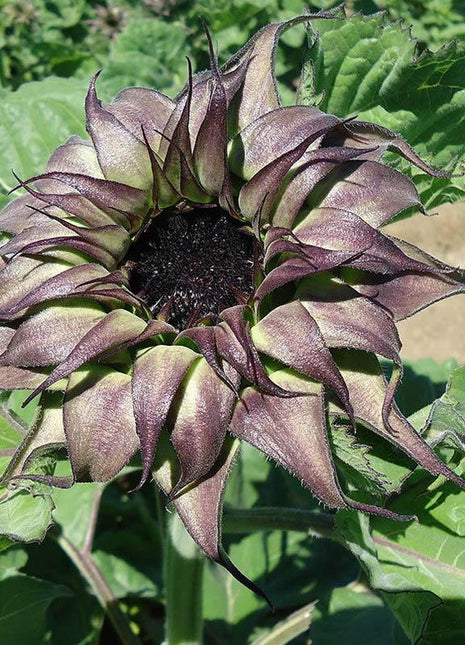
GardenerStar Unique Purple Sunflower Seeds 50 Per Pack
Unique Purple sunflower seeds 50 per pack Be creative with our NEW Purple used as a pre-bloom cut stem to give a brand new appearance to traditional flower arrangements. Purple produces large purple fringed buds with their own unique character that compliments a wide array of flowers. Stems are cut when buds expand and before petals appear. series provide a fast growing annual source of cut fillers for bouquets.Bract Color: PurpleFace Color : DarkPollen : NoStem Type : SingleMaturity : MediumHeight : 4ft (120cm) to 6ft (180cm)Uses : Cut stems before flowering when buds have color and desired sizeIMPORTANT SHIPPING NOTICE:THERE IS A POSTAL SERVICE DELAY it may take up to 3 weeks to receive your order {US Only} and as much as 60 days international. Totally out of my hands as the postal service is experiencing delays.I have added a tracking service to shipping a an additional cost if you want to add that to your order.I'm sorry for the inconvenience that causes us all.
$8.99 - $12.99
-
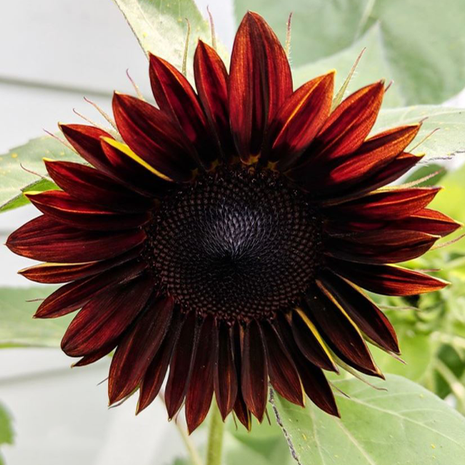
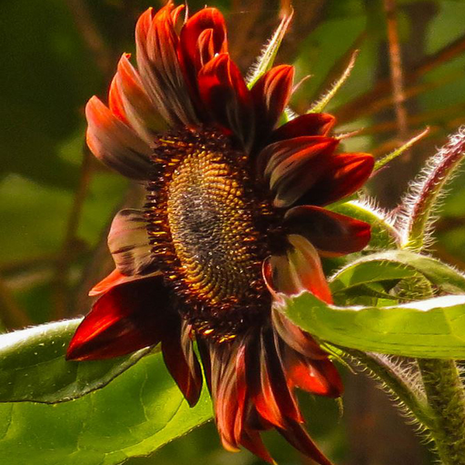
GardenerStar Sunflower, Chianti Hybrid
Stunning wine-red velvet petals flecked with gold. The deepest red sunflower! Wine-red velvet petals are flecked with gold. Flowers are 3-4" across on 4-5 ft. plants. Multiple branched and purple-stemmed. its dramatic in the garden. Pollenless. so its good for cutting. too. How to Sow and Plant Sunflowers are grown from seed sown directly in the garden after frost. Direct sow seeds in average soil in full sun after all danger of frost. When choosing a site consider that sunflowers need a well-drained soil. They face the sun. so make sure they are in an open area of the garden. The taller varieties will cast shadows on other plants. so plant these at the north end of your garden. Prepare the soil by removing weeds and working organic matter into the top 6-8 inches of soil; then level and smooth. Most plants respond well to soils amended with organic matter. Compost is a wonderful form of organic matter with a good balance of nutrients and an ideal pH level. it can be added to your planting area at any time. If compost is not available. top dress the soil after planting with 1-2 inches of organic mulch. which will begin to breakdown into compost. After the growing season. a soil test will indicate what soil amendments are needed for the following season. Sow seeds ½ inch deep in groups of 2 or 3 seeds. Space the groups 18-24 inches apart. depending on the variety. Firm soil lightly. water and keep evenly moist. Seedlings will emerge in 7-10 days. Thin to one plant per group when seedlings have two sets of leaves. How to Grow Keep weeds under control during the growing season. Weeds compete with plants for water. space and nutrients. so control them by either cultivating often or use a mulch to prevent their seeds from germinating. Mulches also help retain soil moisture and maintain even soil temperatures. For annuals an organic mulch of shredded leaves lends a natural look to the bed and will improve the soil as it breaks down in time. Always keep mulches off a plant's stems to prevent possible rot. Keep soil evenly moist but not wet. Once established sunflowers can tolerate drought. No fertilizer is needed unless the soil is poor. Do not over fertilize. Monitor for pests and diseases. Check with your local Cooperative Extension Service for pest controls recommended for your area. Some varieties only produce one bloom so once the bloom is spent. the plant may be removed. Remove plants after they are killed by frost in fall to avoid disease issues the following year. Tips Edible sunflowers will mature in about 3 months or more after sowing. To harvest the seeds. cut the heads off after the stalks are quite dry but before fall or winter rains come. Check the flower heads for maturity to see if the florets in the center of the flower disk have shriveled and the back of the flower head is turning yellow. or the head is starting to droop. Cut flower-heads with a foot of the stalk attached. Hang heads in a warm. dry. well-ventilated place so the seeds may fully ripen and dry. Cheesecloth. netting or a paper bag with holes punched in for ventilation should be placed over the head to protect the seeds and to collect those that may drop from drying. Shorter varieties may be grown in containers. Be sure to use a commercial potting mix. Pollenless varieties make terrific cut flowers.
$6.99 - $11.99
-
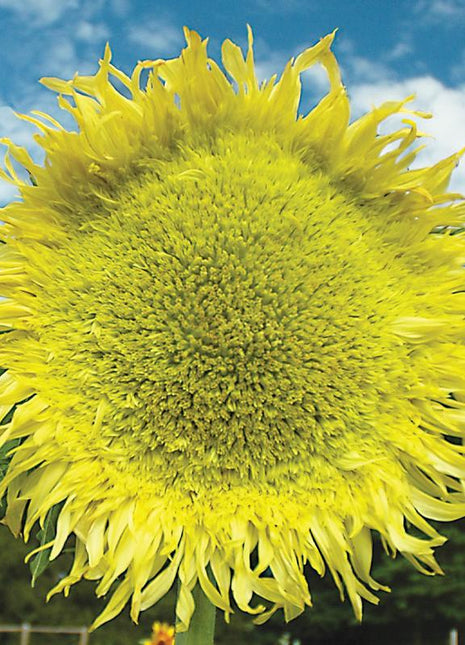
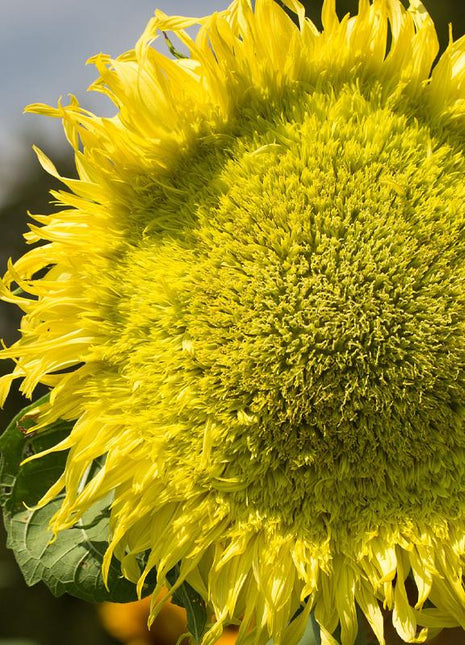
Meicco Sunflower, Zeus Hybrid
The ultimate sunflower for flower power! We're talking flower POWER! This astonishing sunflower radiates the immense strength of Zeus. most powerful god on Olympus. Glowing lemon-yellow fully-double flower heads. 8–12 across. shine like suns. telegraphing energy and light across the landscape. 'Zeus' rises to a massive 8 high. the floral commander! How to Sow and Plant Sunflowers are grown from seed sown directly in the garden after frost. Direct sow seeds in average soil in full sun after all danger of frost. When choosing a site consider that sunflowers need a well-drained soil. They face the sun. so make sure they are in an open area of the garden. The taller varieties will cast shadows on other plants. so plant these at the north end of your garden. Prepare the soil by removing weeds and working organic matter into the top 6-8 inches of soil; then level and smooth. Most plants respond well to soils amended with organic matter. Compost is a wonderful form of organic matter with a good balance of nutrients and an ideal pH level. it can be added to your planting area at any time. If compost is not available. top dress the soil after planting with 1-2 inches of organic mulch. which will begin to breakdown into compost. After the growing season. a soil test will indicate what soil amendments are needed for the following season. Sow seeds ½ inch deep in groups of 2 or 3 seeds. Space the groups 18-24 inches apart. depending on the variety. Firm soil lightly. water and keep evenly moist. Seedlings will emerge in 7-10 days. Thin to one plant per group when seedlings have two sets of leaves. How to Grow Keep weeds under control during the growing season. Weeds compete with plants for water. space and nutrients. so control them by either cultivating often or use a mulch to prevent their seeds from germinating. Mulches also help retain soil moisture and maintain even soil temperatures. For annuals an organic mulch of shredded leaves lends a natural look to the bed and will improve the soil as it breaks down in time. Always keep mulches off a plant's stems to prevent possible rot. Keep soil evenly moist but not wet. Once established sunflowers can tolerate drought. No fertilizer is needed unless the soil is poor. Do not over fertilize. Monitor for pests and diseases. Check with your local Cooperative Extension Service for pest controls recommended for your area. Some varieties only produce one bloom so once the bloom is spent. the plant may be removed. Remove plants after they are killed by frost in fall to avoid disease issues the following year. Tips Edible sunflowers will mature in about 3 months or more after sowing. To harvest the seeds. cut the heads off after the stalks are quite dry but before fall or winter rains come. Check the flower heads for maturity to see if the florets in the center of the flower disk have shriveled and the back of the flower head is turning yellow. or the head is starting to droop. Cut flower-heads with a foot of the stalk attached. Hang heads in a warm. dry. well-ventilated place so the seeds may fully ripen and dry. Cheesecloth. netting or a paper bag with holes punched in for ventilation should be placed over the head to protect the seeds and to collect those that may drop from drying. Shorter varieties may be grown in containers. Be sure to use a commercial potting mix. Pollenless varieties make terrific cut flowers. FAQs What direction do the flowers face? Sunflowers follow the sun.Are any of the seeds toxic? No. they are not toxic. however only the giant sunflower seeds are good for eating.Why are the seeds hollow? This could be from a lack of pollination. sunflowers need insects for pollination. Also sunflower moth larvae may leave tiny holes in the shell.How many flowers does each stem of the giant flowers get? One.How long do sunflowers bloom? Sunflowers bloom for about 4-6 weeks.
$6.99 - $10.99
-
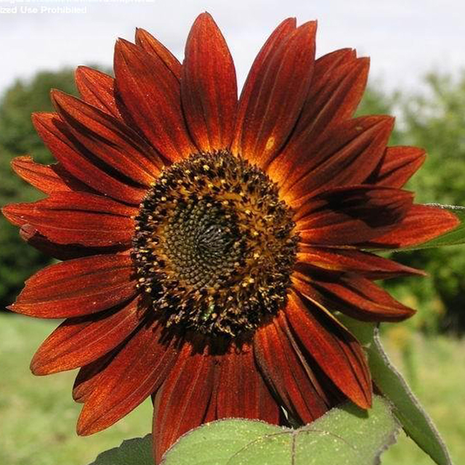
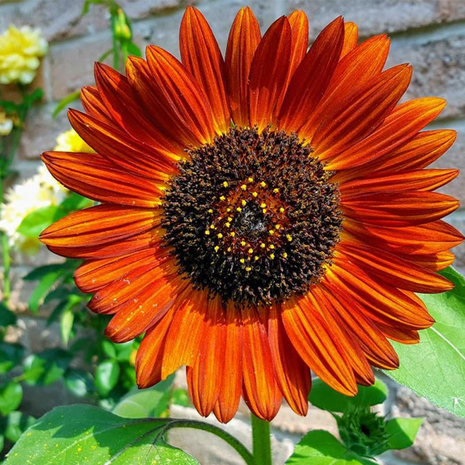
GardenerStar Earthwalker Sunflower Sunflower Seeds - Earthwalker
elianthus annuus SEED TYPEOpen Pollinated Seed ALSO KNOWN ASComb Flower Earthwalker. Golden Flower Of Peru Earthwalker. St Bartholomew's Star Earthwalker Grow Open-Pollinated Sunflowers - Plant Earthwalker Sunflower Seeds Tall. majestic sunflowers in warm earth tones of orange. red. gold and copper will transform any garden or yard into a head-turning masterpiece! Late season blooms in autumnal shades mark the beginning of fall. Great as a border or backdrop. each stalk will produce large heads with several side branches containing multiple blooms. These glorious copper-colored flowers are the harbingers of fall Tall-growing annual with bronze-toned blooms Open pollinated and easy to grow with magnificent Summer blooms Thrives in bright. sunny growing areas
$6.99 - $11.99
-
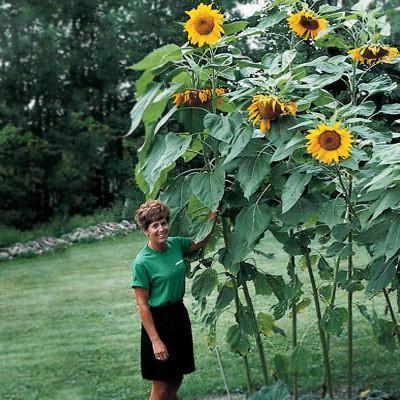
Harris Sunflower Mammoth
These plants are 8' and more in height when well grown and make an effective screen or background. The impressive flower heads have brown centers surrounded by yellow petals and are often 12" across. When dry. the seed heads can be cut and sold as is for wild bird food. Or spread them out under cover until seeds loosen and shatter out of the head. then package them as snack food and for baking.Color: Brown centers surrounded by yellow petalsAnnual SHIPPING Seed Untreated 1 Ounce: We have under 5 packages of this size but we have more in the warehouse. If you order today we will package up the necessary seed and the estimated ship date is 05/16/20Seed Untreated 25 Pounds: We are currently breaking down the bulk seed into your package size and will be ready to be shipped shortly. If you ordered today the estimated ship date is 05/09/20 PACKAGING Approximately 2.925 seeds per pound CULTURE Soil temperature: 70 - 75 degrees fahrenheitSeeding depth: 1 - 1.5 inchesGermination lighting: Dark requiredGermination days: 4 - 8 daysGrow on temperature day: 55 - 60 degrees fahrenheitPlant spread: 30 - 36 inchesPlant height: 8 -10'Plant type: annualMaturation days: 75 days
$5.99 - $7.99
-
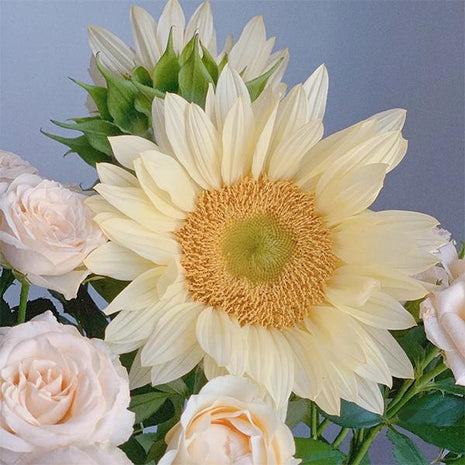
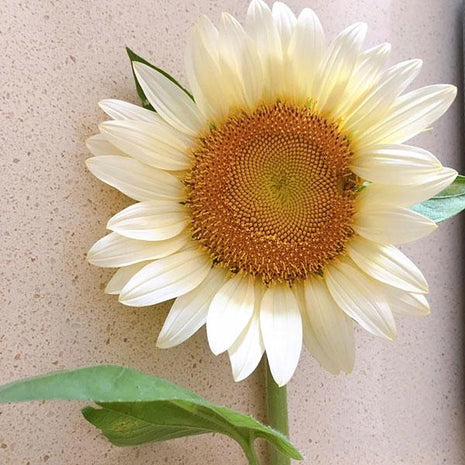
Meicco Butter Sunflower Seeds
Product Details Sow Method Direct Sow Sun Full Sun Height 3-4 feet Spread 15-30 inches Ornamental Use Beds. Container. Cut Flowers Life Cycle Annual Growing Information Sunflowers are grown from seed sown directly in the garden after frost. Direct sow seeds in average soil in full sun after all danger of frost. When choosing a site consider that sunflowers need a well-drained soil. They face the sun. so make sure they are in an open area of the garden. The taller varieties will cast shadows on other plants. so plant these at the north end of your garden. Prepare the soil by removing weeds and working organic matter into the top 6-8 inches of soil; then level and smooth. Most plants respond well to soils amended with organic matter. Compost is a wonderful form of organic matter with a good balance of nutrients and an ideal pH level. it can be added to your planting area at any time. If compost is not available. top dress the soil after planting with 1-2 inches of organic mulch. which will begin to breakdown into compost. After the growing season. a soil test will indicate what soil amendments are needed for the following season. Sow seeds ½ inch deep in groups of 2 or 3 seeds. Space the groups 18-24 inches apart. depending on the variety. Firm soil lightly. water and keep evenly moist. Seedlings will emerge in 7-10 days. Thin to one plant per group when seedlings have two sets of leaves. Keep weeds under control during the growing season. Weeds compete with plants for water. space and nutrients. so control them by either cultivating often or use a mulch to prevent their seeds from germinating. Mulches also help retain soil moisture and maintain even soil temperatures. For annuals an organic mulch of shredded leaves lends a natural look to the bed and will improve the soil as it breaks down in time. Always keep mulches off a plant's stems to prevent possible rot. Keep soil evenly moist but not wet. Once established sunflowers can tolerate drought. No fertilizer is needed unless the soil is poor. Do not over fertilize. Monitor for pests and diseases. Check with your local Cooperative Extension Service for pest controls recommended for your area. Some varieties only produce one bloom so once the bloom is spent. the plant may be removed. Remove plants after they are killed by frost in fall to avoid disease issues the following year. Edible sunflowers will mature in about 3 months or more after sowing. To harvest the seeds. cut the heads off after the stalks are quite dry but before fall or winter rains come. Check the flower heads for maturity to see if the florets in the center of the flower disk have shriveled and the back of the flower head is turning yellow. or the head is starting to droop. Cut flower-heads with a foot of the stalk attached. Hang heads in a warm. dry. well-ventilated place so the seeds may fully ripen and dry. Cheesecloth. netting or a paper bag with holes punched in for ventilation should be placed over the head to protect the seeds and to collect those that may drop from drying. Shorter varieties may be grown in containers. Be sure to use a commercial potting mix. Pollenless varieties make terrific cut flowers.
$10.99 $6.99
-
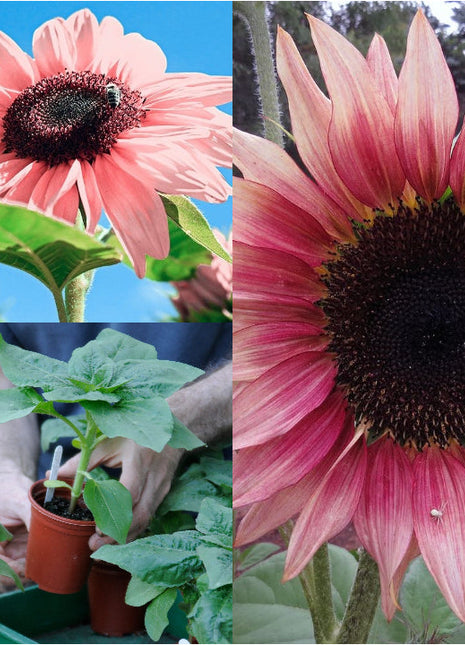
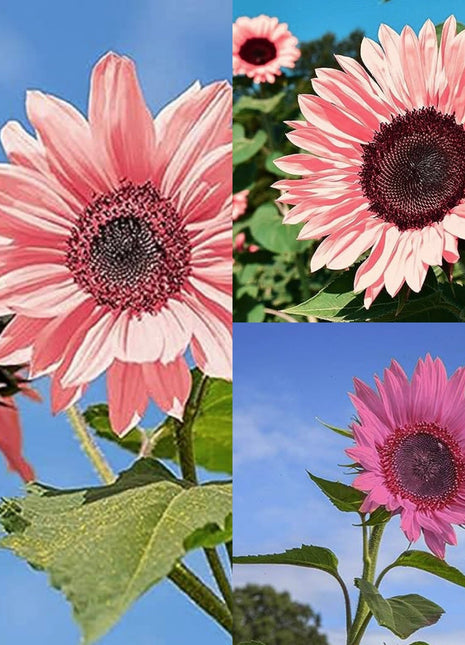
Meicco Pink Sunflower Seeds-High Germination Rate Wonderful Choice for Garden
✅ Worldwide Insured Delivery.✅ ⏰Handling time>> Ship within 8-24 hours after payment ✅ 🚚Delivery time>> worldwide 5-15 working days✅ Shipping>>Express Delivery from the Nearest Global Warehouse to the Worldwide.✅ 🤝Returns>> Fast refund. 100% Money Back Guarantee✅ We support Paypal payments to protect your property Product Details Sow Method Direct Sow Sun Full Sun Height 3-4 feet Spread 15-30 inches Ornamental Use Beds. Container. Cut Flowers Life Cycle Annual FEATURE Hardiness zone.4-9 Grow.Generally. sunflower seeds are sown 1-inch deep. spacing the seeds 6 to 36-inches apart. depending on the variety.You can also sow several seeds close together and remove the weaker ones after a few weeks. Soil temperature.70 - 75 degrees fahrenheit. Germination days.4 - 8 days. Self-seeding.Grow from seed and enjoy growing with your family. Growing Information Sunflowers are grown from seed sown directly in the garden after frost. Direct sow seeds in average soil in full sun after all danger of frost. When choosing a site consider that sunflowers need a well-drained soil. They face the sun. so make sure they are in an open area of the garden. The taller varieties will cast shadows on other plants. so plant these at the north end of your garden. Prepare the soil by removing weeds and working organic matter into the top 6-8 inches of soil; then level and smooth. Most plants respond well to soils amended with organic matter. Compost is a wonderful form of organic matter with a good balance of nutrients and an ideal pH level. it can be added to your planting area at any time. If compost is not available. top dress the soil after planting with 1-2 inches of organic mulch. which will begin to breakdown into compost. After the growing season. a soil test will indicate what soil amendments are needed for the following season. Sow seeds ½ inch deep in groups of 2 or 3 seeds. Space the groups 18-24 inches apart. depending on the variety. Firm soil lightly. water and keep evenly moist. Seedlings will emerge in 7-10 days. Thin to one plant per group when seedlings have two sets of leaves. Keep weeds under control during the growing season. Weeds compete with plants for water. space and nutrients. so control them by either cultivating often or use a mulch to prevent their seeds from germinating. Mulches also help retain soil moisture and maintain even soil temperatures. For annuals an organic mulch of shredded leaves lends a natural look to the bed and will improve the soil as it breaks down in time. Always keep mulches off a plant's stems to prevent possible rot. Keep soil evenly moist but not wet. Once established sunflowers can tolerate drought. No fertilizer is needed unless the soil is poor. Do not over fertilize. Monitor for pests and diseases. Check with your local Cooperative Extension Service for pest controls recommended for your area. Some varieties only produce one bloom so once the bloom is spent. the plant may be removed. Remove plants after they are killed by frost in fall to avoid disease issues the following year. Edible sunflowers will mature in about 3 months or more after sowing. To harvest the seeds. cut the heads off after the stalks are quite dry but before fall or winter rains come. Check the flower heads for maturity to see if the florets in the center of the flower disk have shriveled and the back of the flower head is turning yellow. or the head is starting to droop. Cut flower-heads with a foot of the stalk attached. Hang heads in a warm. dry. well-ventilated place so the seeds may fully ripen and dry. Cheesecloth. netting or a paper bag with holes punched in for ventilation should be placed over the head to protect the seeds and to collect those that may drop from drying. Shorter varieties may be grown in containers. Be sure to use a commercial potting mix. Pollenless varieties make terrific cut flowers. Our Guarantee We truly believe we carry some of the most innovative products in the world. and we want to make sure we back that up with a risk-free 90-day guarantee. If you don't have a positive experience for ANY reason. we will do WHATEVER it takes to make sure you are 100% satisfied with your purchase. Buying items online can be a daunting task. so we want you to realize that there is absolutely ZERO risks in buying something and trying it out. If you don't like it. no hard feelings we'll make it right. We have 24/7/365 Ticket and Email Support. Please contact us if you need assistance.
$8.99 - $19.99
-
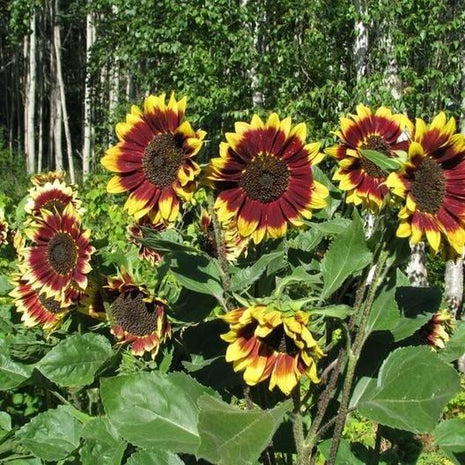
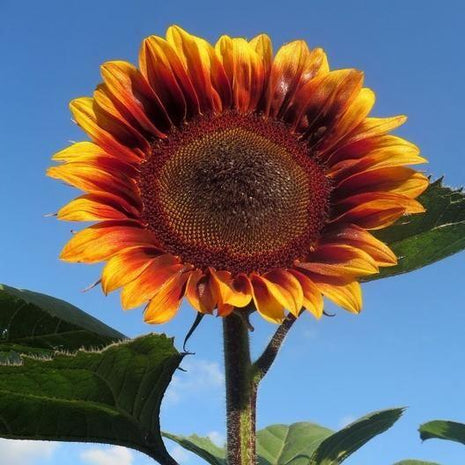
Meicco SUNFLOWER SEEDS - FLOREN
PRODUCT DESCRIPTION Sunflower Seeds - Floren Shorter growing. as sunflower go. Floren will top out around 4 feet tall. but what this lovely variety gives up in height. it gains in bold and beautiful. sunset-like color. Easy to grow annual great for cut flowers Open pollinated with magnificent bi-colored Summer blooms Thrives in bright. sunny growing areas FAST FACTS Name: Sunflower Seeds - Floren Botanical Name: Helianthus annuus Life Cycle: Annual Light Requirement: Full Sun Planting Season: Spring Plant Type: Tall green stalks with large yellow blossoms with red halo and dark center. Features: Cut Flower Garden. Easy to Grow & Maintain. Edible. Attracts Pollinators. Deer Resistant. Drought Tolerant Color: Yellow. Red Blooms: Summer Plant Height: Up to 60 inches Plant Spacing: 8-12 inches Planting Depth: 1/2 inch Sowing Method: Direct Sow Cold Stratification: No Hardiness Zones: 1. 2. 3. 4. 5. 6. 7. 8. 9. 10 Ships: Year Round PLANTING INSTRUCTIONSHow to Plant Floren Sunflowers WHEN TO PLANT SUNFLOWER SEEDSIt is recommended to sow your sunflower seeds directly into your garden rather than start them in starter pots. Sunflowers send down long taproots that can be stunted in small pots. Once all danger of frost has passed and both daytime and nighttime temperatures reach 55F to 60F you are ready to sow your sunflower seeds. WHERE TO PLANT SUNFLOWER SEEDSSunflowers grow best in full-sun locations – receiving at least 6 to 8 hours of full sun exposure per day. Though sunflowers are not finicky. they do appreciate loose. well-draining soil. Choose a location that is sheltered from strong winds. perhaps along a fence or near a building. Also consider the height that the particular variety will reach. HOW TO PLANT SUNFLOWER SEEDSOnce you have chosen your location. dig down to a depth of 2 inches and turn the soil over to loosen it. Many seeds. like poppies. need sun to germinate. This is not the case with sunflowers and in fact need to be pressed 1 inch deep into the soil. If left on the soil surface. more than likely birds will come and eat them before they ever get anywhere close to germination. Final spacing should be 36” apart for giant sunflowers. 24' apart for regular-sized and 12” apart for miniature varieties. HOW TO CARE FOR SUNFLOWERSSunflowers are usually problem-free. Plant early enough so that autumn frosts do not cut your sunflowers' life cycle short. Too much rainfall before and after germination can cause the seeds to rot or bring on downy mildew. Be sure to seed after the rainy season to avoid this. If you would like to harvest the seeds to either replant next year. wait until the end of the bloom cycle. Sunflowers blooms often last 30-45 days. Toward the end of this period. the green back of the flower head will begin to turn yellow and will usually droop at this time. You will also see the seeds swelling on the face of the sunflower. Cover the flowers with paper bags to protect them from birds. Cut off the flower heads and leave inside the brown paper bag. Store this bag in a well-ventilated place like a garage until fully dry. Rub along the seeds with the palm of your hand and the seeds should fall right out into your bag. or work over a cookie sheet. Store seeds in a cool. dry environment until you are ready to reseed next year. To eat: Soak overnight in water. or salt water. Drain. spread on a shallow baking sheet. and roast for 3 hours at 200F or until crisp.
$6.99 - $9.99
-
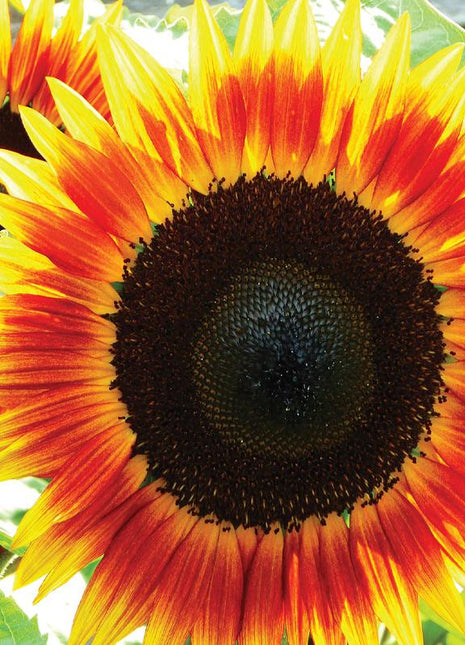
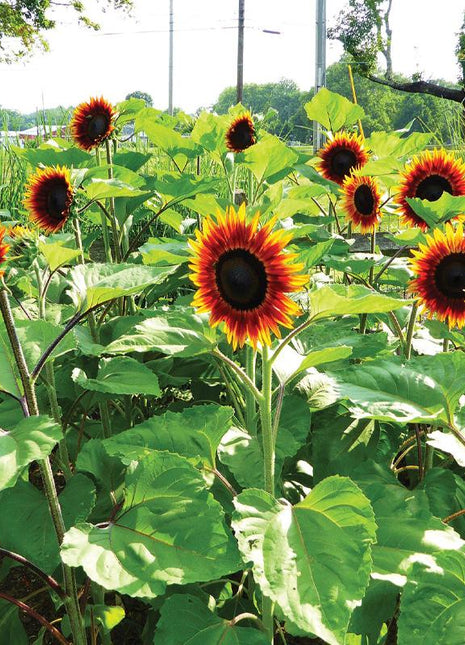
Meicco Sunflower, Fire Catcher
An easy way to fill your home with bouquets that will radiate a warm. sunny glow. A treasure in the garden! Fiery. bicolor. 5" diameter sunflower with yellow and deep orange-red blooms are perfect for cut flower arrangements. An easy way to fill your home with bouquets that will radiate a warm. sunny glow. Pair with 'Sallyfun Blue Emotion' salvia for a fabulous display in a vase. How to Sow and Plant Sunflowers are grown from seed sown directly in the garden after frost. Direct sow seeds in average soil in full sun after all danger of frost. When choosing a site consider that sunflowers need a well-drained soil. They face the sun. so make sure they are in an open area of the garden. The taller varieties will cast shadows on other plants. so plant these at the north end of your garden. Prepare the soil by removing weeds and working organic matter into the top 6-8 inches of soil; then level and smooth. Most plants respond well to soils amended with organic matter. Compost is a wonderful form of organic matter with a good balance of nutrients and an ideal pH level. it can be added to your planting area at any time. If compost is not available. top dress the soil after planting with 1-2 inches of organic mulch. which will begin to breakdown into compost. After the growing season. a soil test will indicate what soil amendments are needed for the following season. Sow seeds ½ inch deep in groups of 2 or 3 seeds. Space the groups 18-24 inches apart. depending on the variety. Firm soil lightly. water and keep evenly moist. Seedlings will emerge in 7-10 days. Thin to one plant per group when seedlings have two sets of leaves. How to Grow Keep weeds under control during the growing season. Weeds compete with plants for water. space and nutrients. so control them by either cultivating often or use a mulch to prevent their seeds from germinating. Mulches also help retain soil moisture and maintain even soil temperatures. For annuals an organic mulch of shredded leaves lends a natural look to the bed and will improve the soil as it breaks down in time. Always keep mulches off a plant's stems to prevent possible rot. Keep soil evenly moist but not wet. Once established sunflowers can tolerate drought. No fertilizer is needed unless the soil is poor. Do not over fertilize. Monitor for pests and diseases. Check with your local Cooperative Extension Service for pest controls recommended for your area. Some varieties only produce one bloom so once the bloom is spent. the plant may be removed. Remove plants after they are killed by frost in fall to avoid disease issues the following year. Tips Edible sunflowers will mature in about 3 months or more after sowing. To harvest the seeds. cut the heads off after the stalks are quite dry but before fall or winter rains come. Check the flower heads for maturity to see if the florets in the center of the flower disk have shriveled and the back of the flower head is turning yellow. or the head is starting to droop. Cut flower-heads with a foot of the stalk attached. Hang heads in a warm. dry. well-ventilated place so the seeds may fully ripen and dry. Cheesecloth. netting or a paper bag with holes punched in for ventilation should be placed over the head to protect the seeds and to collect those that may drop from drying. Shorter varieties may be grown in containers. Be sure to use a commercial potting mix. Pollenless varieties make terrific cut flowers. FAQs What direction do the flowers face? Sunflowers follow the sun.Are any of the seeds toxic? No. they are not toxic. however only the giant sunflower seeds are good for eating.Why are the seeds hollow? This could be from a lack of pollination. sunflowers need insects for pollination. Also sunflower moth larvae may leave tiny holes in the shell.How many flowers does each stem of the giant flowers get? One.How long do sunflowers bloom? Sunflowers bloom for about 4-6 weeks.
$6.99 - $10.99
-
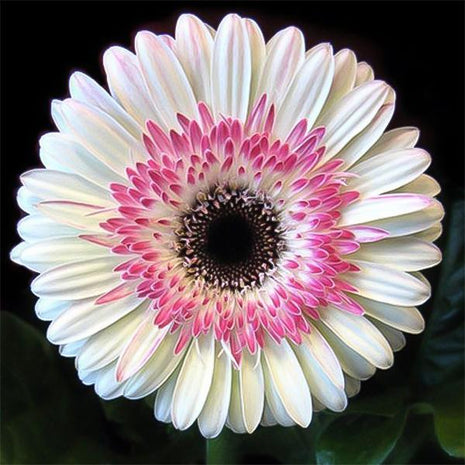
Meicco Pink white gerbera flower seeds, sunflower
Product Details Type Dwarf Sun Full Sun Height 24-36 inches Spread 14-16 inches Ornamental Use Beds. Container. Cut Flowers Life Cycle Annual Gerbera Information Plant easy-to-live flowers in four seasons. garden potted plants Gerbera is also called sunflower. Its beauty is generous. sunny. and hearty. It is not concealed. and it is not ashamed to answer. It is only working hard to release its beauty. Gerbera is one of the common flowers. Its flower resembles the long tongue of a bird. It grows around the stamens. It is as big as the mouth of a cup and resembles the radiant sun. It is also called sunflower. When it is in full bloom. it is gorgeous and elegant. . Jiaotaiyuli. dizzying. Flower language: Mystery. mutual respect and love. perseverance. not afraid of hardships. and always happy. It implies that you like to pursue a rich life.
$6.99 - $10.99
-
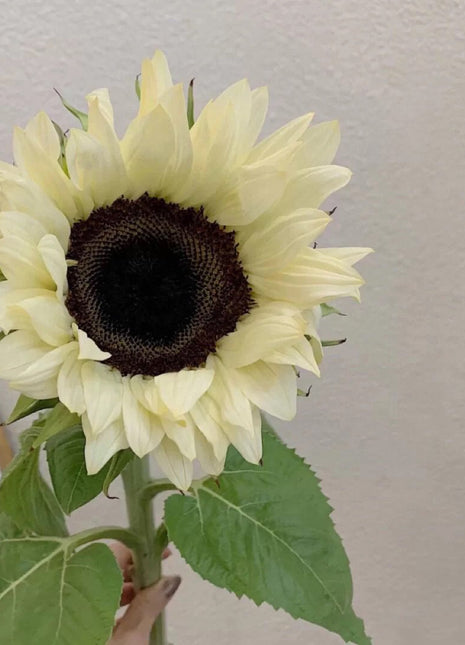
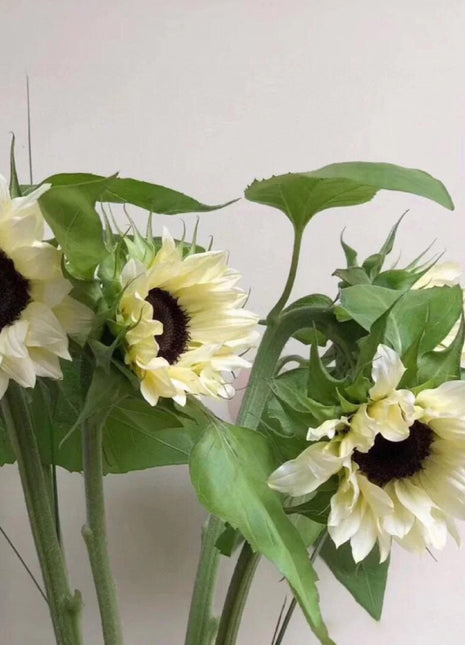
Meicco 50 Seeds White sunflower with black core
Product Details Sow Method Direct Sow Sun Full Sun Height 3-4 feet Spread 15-30 inches Ornamental Use Beds. Container. Cut Flowers Life Cycle Annual GROWING INFORMATION Sunflowers are grown from seed sown directly in the garden after frost. Direct sow seeds in average soil in full sun after all danger of frost. When choosing a site consider that sunflowers need a well-drained soil. They face the sun. so make sure they are in an open area of the garden. The taller varieties will cast shadows on other plants. so plant these at the north end of your garden. Prepare the soil by removing weeds and working organic matter into the top 6-8 inches of soil; then level and smooth. Most plants respond well to soils amended with organic matter. Compost is a wonderful form of organic matter with a good balance of nutrients and an ideal pH level. it can be added to your planting area at any time. If compost is not available. top dress the soil after planting with 1-2 inches of organic mulch. which will begin to breakdown into compost. After the growing season. a soil test will indicate what soil amendments are needed for the following season. Sow seeds ½ inch deep in groups of 2 or 3 seeds. Space the groups 18-24 inches apart. depending on the variety. Firm soil lightly. water and keep evenly moist. Seedlings will emerge in 7-10 days. Thin to one plant per group when seedlings have two sets of leaves. Keep weeds under control during the growing season. Weeds compete with plants for water. space and nutrients. so control them by either cultivating often or use a mulch to prevent their seeds from germinating. Mulches also help retain soil moisture and maintain even soil temperatures. For annuals an organic mulch of shredded leaves lends a natural look to the bed and will improve the soil as it breaks down in time. Always keep mulches off a plant's stems to prevent possible rot. Keep soil evenly moist but not wet. Once established sunflowers can tolerate drought. No fertilizer is needed unless the soil is poor. Do not over fertilize. Monitor for pests and diseases. Check with your local Cooperative Extension Service for pest controls recommended for your area. Some varieties only produce one bloom so once the bloom is spent. the plant may be removed. Remove plants after they are killed by frost in fall to avoid disease issues the following year. Edible sunflowers will mature in about 3 months or more after sowing. To harvest the seeds. cut the heads off after the stalks are quite dry but before fall or winter rains come. Check the flower heads for maturity to see if the florets in the center of the flower disk have shriveled and the back of the flower head is turning yellow. or the head is starting to droop. Cut flower-heads with a foot of the stalk attached. Hang heads in a warm. dry. well-ventilated place so the seeds may fully ripen and dry. Cheesecloth. netting or a paper bag with holes punched in for ventilation should be placed over the head to protect the seeds and to collect those that may drop from drying. Shorter varieties may be grown in containers. Be sure to use a commercial potting mix. Pollenless varieties make terrific cut flowers.
$12.99 $6.99
-
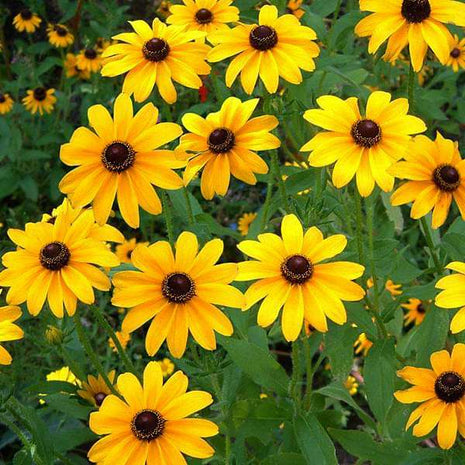
Supernova 50 pcs Sunflower Miniature - Desi Flower Seeds
Description Sunflowers are annuals with showy. daisy-like flower heads that are usually 2-4 inches across and bright yellow (though occasionally red). Tall and course. the plants have creeping or tuberous roots and large. bristly leaves. Today. varieties have even been developed for small spaces and containers. Most sunflowers are remarkably tough and easy to grow as long as the soil is not waterlogged. Most are heat- and drought-tolerant. They make excellent cut flowers and many are attractive to bees and birds.Smaller plants with big-time flower power. Striking compact. low-growing sunflower fills vase after beautiful vase with luminous. long-stemmed. brown-eyed. golden flowers. Heavy-branching. floriferous 20-30 tall plants will keep your home aglow with joyous blooms. Seeds Specifications Seeds per Packet 50 Common Name sunflower.Helianthus(Botanical Name) Height Height: 20-30 inches Spread: 18-24 inches Flower Colour Yellow Bloom Time Summer Difficulty Level Easy to grow Planting and care Water plants deeply but infrequently to encourage deep rooting Feed plants only sparingly; over-fertilization can cause stems to break in the fall Tall species and cultivars require support Bamboo stakes are a good choice for any plant that has a strong. single stem and needs support for a short period of time Sunflower Miniature care Sunflowers grow best in locations with the direct sun (6 to 8 hours per day); they prefer long. hot summers to flower well Sunflowers have long tap roots which need to stretch out so the plants prefer well-dug. loose. well-draining soil; in preparing a bed. dig down 2 feet in depth and about 3 feet across to ensure the soil isn’t too compact Find a well-drained location. and prepare your soil by digging an area of about 2-3 feet in circumference to a depth of about 2 feet Though they’re not too fussy. sunflowers thrive in slightly acidic to somewhat alkaline (pH 6 0 to 7 Sunflowers are heavy feeders so the soil needs to be nutrient-rich with organic matter or composted (aged) manure Or. work in a slow release granular fertilizer 8 inches deep into your soil If possible. put seeds in a spot that is sheltered from strong winds. perhaps along with a fence or near a building Sunlight Full Sun. Part Sun Watering regularly Soil Find a well-drained location. and prepare your soil by digging an area of about 2-3 feet in circumference to a depth of about 2 feet. Temperature soil temperature :55 to 60 degrees F Fertilizer Make sure you have potassium and phosphorus in the soil. Harvest Season You can begin to enjoy the bright sunflower blossoms several months after you planted seeds. but you will have to wait another month or so before you can eat sunflower seeds. Although the exact timetable varies among cultivars. harvest time usually rolls round toward the end of summer. For cut flowers. remove 1 foot or more of stem with the flower and plunge it into hot water immediately to draw out air. For edible seeds. you must harvest the flowers after the leaves shrivel but before the seasonal rains. The flower heads with 1 to 2 feet of stalk must spend another month hung in a dry. well-aired spot before you extract the seeds. Sunflower Miniature special feature Sunflowers say summer like no other plant. American natives. sunflowers are grown for beauty as well as harvested for seed. Sunflower Miniature uses Ornamental Use: The flowers can be used to make an all natural dye The stalks are used to make paper and clothes Medicinal Use: They are a popular. nutritious snack containing a good source of protein. vitamins A. B. and E. calcium. nitrogen. and iron Note: Use only after Consulting your Specialist Culinary Use: The edible sunflower seeds can be eaten raw. cooked. roasted. or dried and ground for use in bread or cakes. as a snack Oil can be extracted and used for cooking and soap making
$10.99 $5.99
-
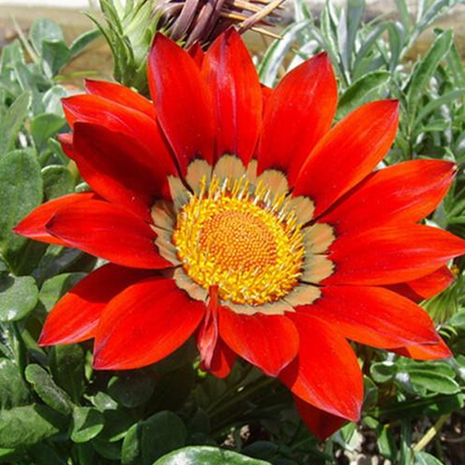
Jack Seeds 20 Seeds Gazania Coastal Rigens SunFlower Seeds
Grow your own vegetables with these Gazania Coastal Rigens Seeds. Each pack contains 100 seeds. Highlights: Full-bloom Period: Summer Type: Herbs Applicable Constellation: Taurus Flowerpot: Excluded Cultivating Difficulty Degree: Very Easy Function: Beautifying Classification: Novel Plant Use: Outdoor Plants Style: Perennial Climate: Temperate Location: Balcony Model Number: NO.6 Size: Small Product Type: Bonsai Variety: Chrysanthemum seeds
$5.99
-
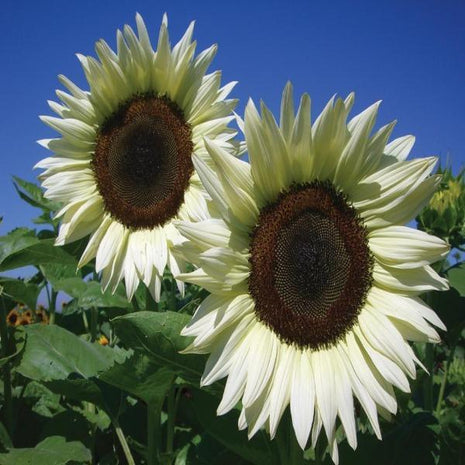
Supernova 50 Pcs Italian White Sunflower Seeds
Product Details Sow Method Direct Sow Sun Full Sun Height 5-6 feet Spread 12-18 inches Ornamental Use Beds. Container. Cut Flowers Life Cycle Annual Growing Information Sunflowers are grown from seed sown directly in the garden after frost. Direct sow seeds in average soil in full sun after all danger of frost. When choosing a site consider that sunflowers need a well-drained soil. They face the sun. so make sure they are in an open area of the garden. The taller varieties will cast shadows on other plants. so plant these at the north end of your garden. Prepare the soil by removing weeds and working organic matter into the top 6-8 inches of soil; then level and smooth. Most plants respond well to soils amended with organic matter. Compost is a wonderful form of organic matter with a good balance of nutrients and an ideal pH level. it can be added to your planting area at any time. If compost is not available. top dress the soil after planting with 1-2 inches of organic mulch. which will begin to breakdown into compost. After the growing season. a soil test will indicate what soil amendments are needed for the following season. Sow seeds ½ inch deep in groups of 2 or 3 seeds. Space the groups 18-24 inches apart. depending on the variety. Firm soil lightly. water and keep evenly moist. Seedlings will emerge in 7-10 days. Thin to one plant per group when seedlings have two sets of leaves. Keep weeds under control during the growing season. Weeds compete with plants for water. space and nutrients. so control them by either cultivating often or use a mulch to prevent their seeds from germinating. Mulches also help retain soil moisture and maintain even soil temperatures. For annuals an organic mulch of shredded leaves lends a natural look to the bed and will improve the soil as it breaks down in time. Always keep mulches off a plant's stems to prevent possible rot. Keep soil evenly moist but not wet. Once established sunflowers can tolerate drought. No fertilizer is needed unless the soil is poor. Do not over fertilize. Monitor for pests and diseases. Check with your local Cooperative Extension Service for pest controls recommended for your area. Some varieties only produce one bloom so once the bloom is spent. the plant may be removed. Remove plants after they are killed by frost in fall to avoid disease issues the following year. Edible sunflowers will mature in about 3 months or more after sowing. To harvest the seeds. cut the heads off after the stalks are quite dry but before fall or winter rains come. Check the flower heads for maturity to see if the florets in the center of the flower disk have shriveled and the back of the flower head is turning yellow. or the head is starting to droop. Cut flower-heads with a foot of the stalk attached. Hang heads in a warm. dry. well-ventilated place so the seeds may fully ripen and dry. Cheesecloth. netting or a paper bag with holes punched in for ventilation should be placed over the head to protect the seeds and to collect those that may drop from drying. Shorter varieties may be grown in containers. Be sure to use a commercial potting mix. Pollenless varieties make terrific cut flowers.
$10.99 $5.99
-
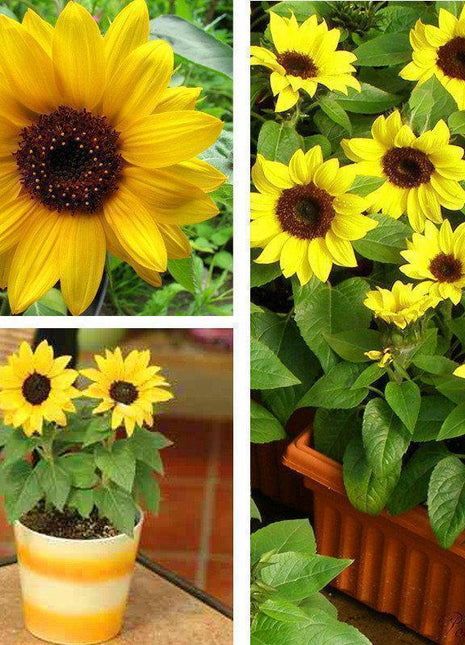
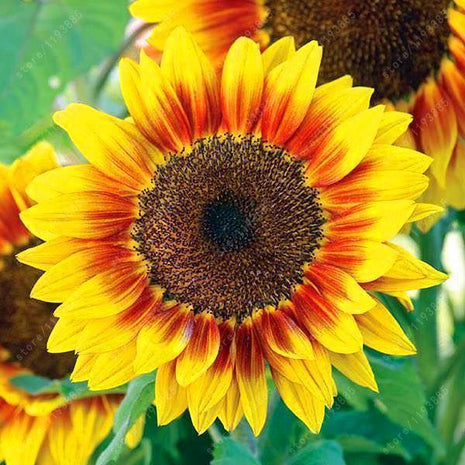
inlaud 40pcs Dwarf Sunflower Seeds Rare Flower Seeds
Specification:Name: sunflowerNumber of seed in each pack: 10piecesSowing Temperature :20 - 25 CGrowing Temperature :15 - 30 CHeight when grow up : About 30-40 cmFlowering time: 8 - 12 weeksBest sowing seasons: spring. summer. autumn. winterColour of flowers : yellow colorsGermination days: about 6 - 10 daysDwarf sunflower suitable for planting flower beds. the general height 40 cm. 30 cm in diameter faceplate. flowering stem. adaptable. generally transplanting seedlings. seedling age 25-30 days. spacing 40 × 60 cm. but also ornamental plants. home interior seasons can be broadcast around the planting.Package Includes :1 x 40 Pcs Sunflower SeedsKindly Tip :Please allow 1-3cm error due to manual measurement.Please understand that colors may exist chromatic aberration.
$5.88
-
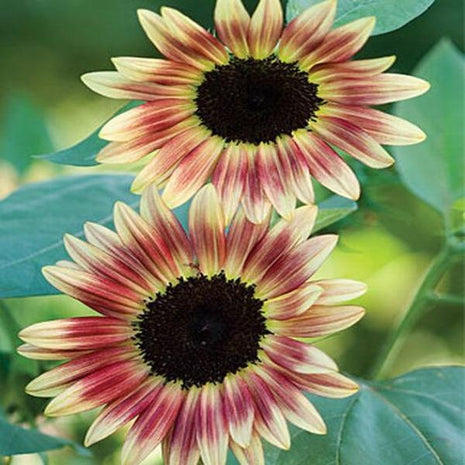
Meicco 100 Pcs Strawberry Blonde Hybrid Sunflower Seeds
Product Details Sow Method Direct Sow Sun Full Sun Height 60-72 inches Spread 24-26 inches Ornamental Use Beds. Container. Cut Flowers Life Cycle Annual Growing Information Sunflowers are grown from seed sown directly in the garden after frost. Direct sow seeds in average soil in full sun after all danger of frost. When choosing a site consider that sunflowers need a well-drained soil. They face the sun. so make sure they are in an open area of the garden. The taller varieties will cast shadows on other plants. so plant these at the north end of your garden. Prepare the soil by removing weeds and working organic matter into the top 6-8 inches of soil; then level and smooth. Most plants respond well to soils amended with organic matter. Compost is a wonderful form of organic matter with a good balance of nutrients and an ideal pH level. it can be added to your planting area at any time. If compost is not available. top dress the soil after planting with 1-2 inches of organic mulch. which will begin to breakdown into compost. After the growing season. a soil test will indicate what soil amendments are needed for the following season. Sow seeds ½ inch deep in groups of 2 or 3 seeds. Space the groups 18-24 inches apart. depending on the variety. Firm soil lightly. water and keep evenly moist. Seedlings will emerge in 7-10 days. Thin to one plant per group when seedlings have two sets of leaves. Keep weeds under control during the growing season. Weeds compete with plants for water. space and nutrients. so control them by either cultivating often or use a mulch to prevent their seeds from germinating. Mulches also help retain soil moisture and maintain even soil temperatures. For annuals an organic mulch of shredded leaves lends a natural look to the bed and will improve the soil as it breaks down in time. Always keep mulches off a plant's stems to prevent possible rot. Keep soil evenly moist but not wet. Once established sunflowers can tolerate drought. No fertilizer is needed unless the soil is poor. Do not over fertilize. Monitor for pests and diseases. Check with your local Cooperative Extension Service for pest controls recommended for your area. Some varieties only produce one bloom so once the bloom is spent. the plant may be removed. Remove plants after they are killed by frost in fall to avoid disease issues the following year. Edible sunflowers will mature in about 3 months or more after sowing. To harvest the seeds. cut the heads off after the stalks are quite dry but before fall or winter rains come. Check the flower heads for maturity to see if the florets in the center of the flower disk have shriveled and the back of the flower head is turning yellow. or the head is starting to droop. Cut flower-heads with a foot of the stalk attached. Hang heads in a warm. dry. well-ventilated place so the seeds may fully ripen and dry. Cheesecloth. netting or a paper bag with holes punched in for ventilation should be placed over the head to protect the seeds and to collect those that may drop from drying. Shorter varieties may be grown in containers. Be sure to use a commercial potting mix. Pollenless varieties make terrific cut flowers.
$7.99
-
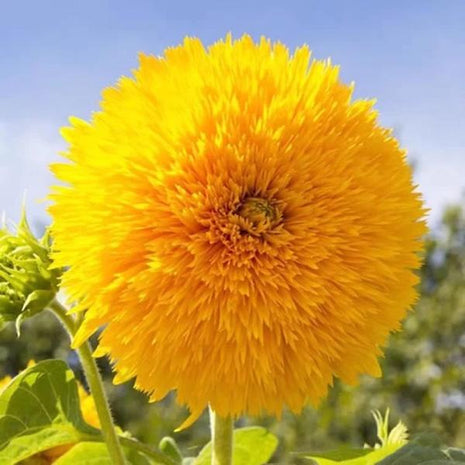
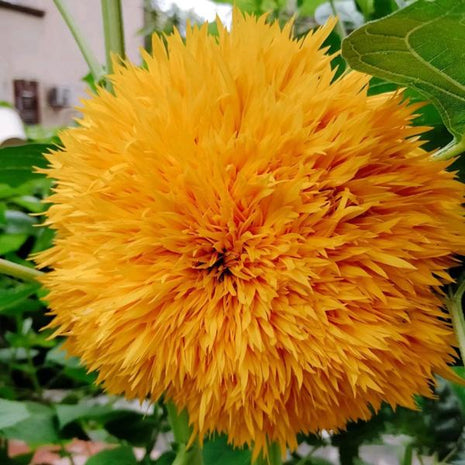
Meicco 50 Seeds Teddy Bear Sunflower
Product Details Sow Method Direct Sow Sun Full Sun Height 3-4 feet Spread 15-30 inches Ornamental Use Beds. Container. Cut Flowers Life Cycle Annual GROWING INFORMATION Sunflowers are grown from seed sown directly in the garden after frost. Direct sow seeds in average soil in full sun after all danger of frost. When choosing a site consider that sunflowers need a well-drained soil. They face the sun. so make sure they are in an open area of the garden. The taller varieties will cast shadows on other plants. so plant these at the north end of your garden. Prepare the soil by removing weeds and working organic matter into the top 6-8 inches of soil; then level and smooth. Most plants respond well to soils amended with organic matter. Compost is a wonderful form of organic matter with a good balance of nutrients and an ideal pH level. it can be added to your planting area at any time. If compost is not available. top dress the soil after planting with 1-2 inches of organic mulch. which will begin to breakdown into compost. After the growing season. a soil test will indicate what soil amendments are needed for the following season. Sow seeds ½ inch deep in groups of 2 or 3 seeds. Space the groups 18-24 inches apart. depending on the variety. Firm soil lightly. water and keep evenly moist. Seedlings will emerge in 7-10 days. Thin to one plant per group when seedlings have two sets of leaves. Keep weeds under control during the growing season. Weeds compete with plants for water. space and nutrients. so control them by either cultivating often or use a mulch to prevent their seeds from germinating. Mulches also help retain soil moisture and maintain even soil temperatures. For annuals an organic mulch of shredded leaves lends a natural look to the bed and will improve the soil as it breaks down in time. Always keep mulches off a plant's stems to prevent possible rot. Keep soil evenly moist but not wet. Once established sunflowers can tolerate drought. No fertilizer is needed unless the soil is poor. Do not over fertilize. Monitor for pests and diseases. Check with your local Cooperative Extension Service for pest controls recommended for your area. Some varieties only produce one bloom so once the bloom is spent. the plant may be removed. Remove plants after they are killed by frost in fall to avoid disease issues the following year. Edible sunflowers will mature in about 3 months or more after sowing. To harvest the seeds. cut the heads off after the stalks are quite dry but before fall or winter rains come. Check the flower heads for maturity to see if the florets in the center of the flower disk have shriveled and the back of the flower head is turning yellow. or the head is starting to droop. Cut flower-heads with a foot of the stalk attached. Hang heads in a warm. dry. well-ventilated place so the seeds may fully ripen and dry. Cheesecloth. netting or a paper bag with holes punched in for ventilation should be placed over the head to protect the seeds and to collect those that may drop from drying. Shorter varieties may be grown in containers. Be sure to use a commercial potting mix. Pollenless varieties make terrific cut flowers.
$12.99 $6.99
-
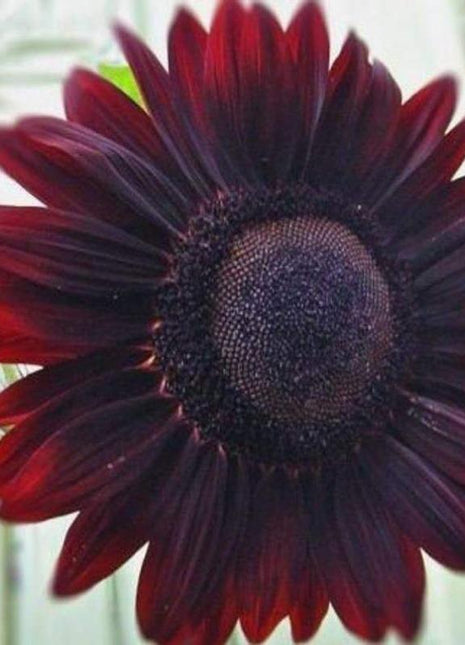
Swellfly 50Pcs Velvet queen Sunflower Seeds
Product Details Sow Method Direct Sow Sun Full Sun Height 5-6 feet Spread 12-18 inches Ornamental Use Beds. Container. Cut Flowers Life Cycle Annual Growing Information Sunflowers are grown from seed sown directly in the garden after frost. Direct sow seeds in average soil in full sun after all danger of frost. When choosing a site consider that sunflowers need a well-drained soil. They face the sun. so make sure they are in an open area of the garden. The taller varieties will cast shadows on other plants. so plant these at the north end of your garden. Prepare the soil by removing weeds and working organic matter into the top 6-8 inches of soil; then level and smooth. Most plants respond well to soils amended with organic matter. Compost is a wonderful form of organic matter with a good balance of nutrients and an ideal pH level. it can be added to your planting area at any time. If compost is not available. top dress the soil after planting with 1-2 inches of organic mulch. which will begin to breakdown into compost. After the growing season. a soil test will indicate what soil amendments are needed for the following season. Sow seeds ½ inch deep in groups of 2 or 3 seeds. Space the groups 18-24 inches apart. depending on the variety. Firm soil lightly. water and keep evenly moist. Seedlings will emerge in 7-10 days. Thin to one plant per group when seedlings have two sets of leaves. Keep weeds under control during the growing season. Weeds compete with plants for water. space and nutrients. so control them by either cultivating often or use a mulch to prevent their seeds from germinating. Mulches also help retain soil moisture and maintain even soil temperatures. For annuals an organic mulch of shredded leaves lends a natural look to the bed and will improve the soil as it breaks down in time. Always keep mulches off a plant's stems to prevent possible rot. Keep soil evenly moist but not wet. Once established sunflowers can tolerate drought. No fertilizer is needed unless the soil is poor. Do not over fertilize. Monitor for pests and diseases. Check with your local Cooperative Extension Service for pest controls recommended for your area. Some varieties only produce one bloom so once the bloom is spent. the plant may be removed. Remove plants after they are killed by frost in fall to avoid disease issues the following year. Edible sunflowers will mature in about 3 months or more after sowing. To harvest the seeds. cut the heads off after the stalks are quite dry but before fall or winter rains come. Check the flower heads for maturity to see if the florets in the center of the flower disk have shriveled and the back of the flower head is turning yellow. or the head is starting to droop. Cut flower-heads with a foot of the stalk attached. Hang heads in a warm. dry. well-ventilated place so the seeds may fully ripen and dry. Cheesecloth. netting or a paper bag with holes punched in for ventilation should be placed over the head to protect the seeds and to collect those that may drop from drying. Shorter varieties may be grown in containers. Be sure to use a commercial potting mix. Pollenless varieties make terrific cut flowers.
$10.99 $6.99
-
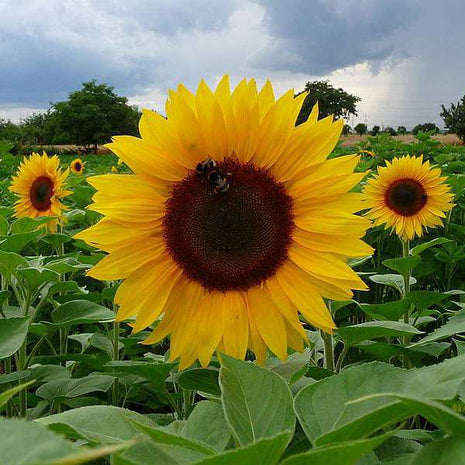
Supernova 50 pcs Sunflower Russian Giant - Desi Flower Seeds
Description Sunflowers say summer like no other plant. Sunflower packet contains 35 seeds. Sunflowers are annuals with showy. daisylike flower-heads that are usually 2-4 inches across and bright yellow (though occasionally red). Tall and course. the plants have creeping or tuberous roots and large. bristly leaves. Today. varieties have even been developed for small spaces and containers.Most sunflowers are remarkably tough and easy to grow as long as the soil is not waterlogged. Most are heat- and drought-tolerant. They make excellent cut flowers and many are attractive to bees and birds.Smaller plants with big-time flower power. Striking compact. low-growing sunflower fills vase after beautiful vase with luminous. long-stemmed. brown-eyed. golden flowers. Heavy-branching. floriferous 20-30 feet tall plants will keep your home aglow with joyous blooms. Seeds Specifications Seeds per Packet 50 Common Name sunflower.Helianthus(Botanical Name) Height Height: 20-30 inches Spread: 18-24 inches Flower Colour Yellow Bloom Time Summer Difficulty Level Easy to grow Planting and care Water plants deeply but infrequently to encourage deep rooting Feed plants only sparingly; over-fertilization can cause stems to break in the fall Tall species and cultivars require support Bamboo stakes are a good choice for any plant that has a strong. single stem and needs support for a short period of time Sunflower Russian Giant care Sunflowers grow best in locations with the direct sun (6 to 8 hours per day); they prefer long. hot summers to flower well Sunflowers have long tap roots which need to stretch out so the plants prefer well-dug. loose. well-draining soil; in preparing a bed. dig down 2 feet in depth and about 3 feet across to ensure the soil isn’t too compact Find a well-drained location. and prepare your soil by digging an area of about 2-3 feet in circumference to a depth of about 2 feet Though they’re not too fussy. sunflowers thrive in slightly acidic to somewhat alkaline (pH 6 0 to 7 Sunflowers are heavy feeders so the soil needs to be nutrient-rich with organic matter or composted (aged) manure Or. work in a slow release granular fertilizer 8 inches deep into your soil If possible. put seeds in a spot that is sheltered from strong winds. perhaps along with a fence or near a building Sunlight Full Sun. Part Sun Watering regularly Soil Find a well-drained location. and prepare your soil by digging an area of about 2-3 feet in circumference to a depth of about 2 feet. Temperature soil temperature :55 to 60 degrees F Fertilizer Make sure you have potassium and phosphorus in the soil. Harvest Season You can begin to enjoy the bright sunflower blossoms several months after you planted seeds. but you will have to wait another month or so before you can eat sunflower seeds. Although the exact timetable varies among cultivars. harvest time usually rolls round toward the end of summer. For cut flowers. remove 1 foot or more of stem with the flower and plunge it into hot water immediately to draw out air. For edible seeds. you must harvest the flowers after the leaves shrivel but before the seasonal rains. The flower heads with 1 to 2 feet of stalk must spend another month hung in a dry. well-aired spot before you extract the seeds. Sunflower Russian Giant special feature Sunflowers say summer like no other plant. American natives. sunflowers are grown for beauty as well as harvested for seed. Sunflower Russian Giant uses Ornamental Use: The flowers can be used to make an all natural dye The stalks are used to make paper and clothes Medicinal Use: They are a popular. nutritious snack containing a good source of protein. vitamins A. B. and E. calcium. nitrogen. and iron Note: Use only after Consulting your Specialist Culinary Use: The edible sunflower seeds can be eaten raw. cooked. roasted. or dried and ground for use in bread or cakes. as a snack Oil can be extracted and used for cooking and soap making
$10.99 $5.99
-
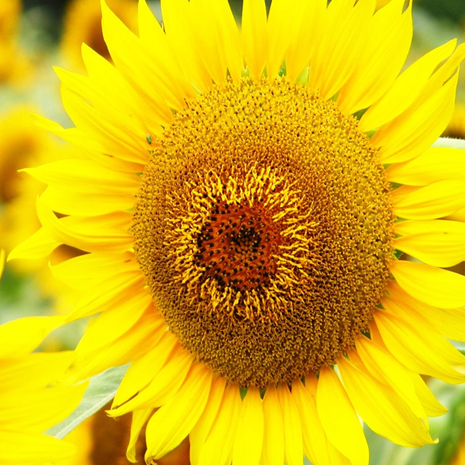
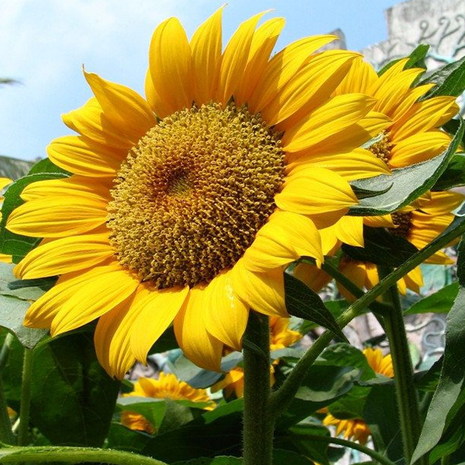
Jack Seeds 50 Seeds Mammoth Russian Sunflower Seeds
Grow your own flowers with these 50 pcs Mammoth Russian Sunflower Seeds. Each pack contains 50 seeds. Highlights: Product Type: Bonsai Use: Indoor Plants Cultivating Difficulty Degree: Very Easy Classification: Happy Farm Full-bloom Period: Summer Type: Blooming Plants Flowerpot: Excluded Location: Courtyard Function: Beautifying Size: Small Applicable Constellation: Gemini Variety: Sunflower Climate: Subtropics Style: Annual
$12.99 $6.99
-
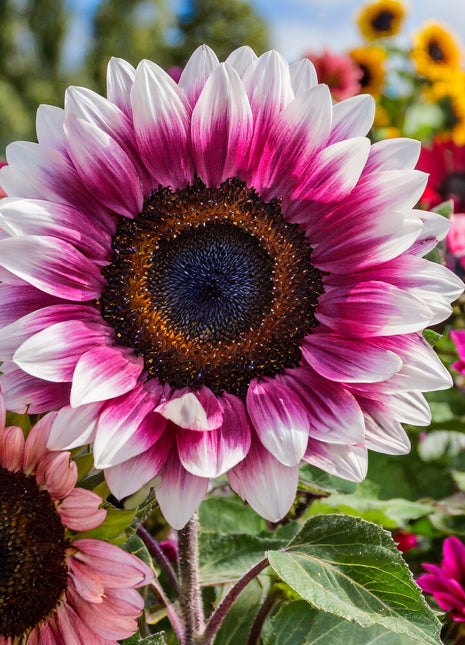
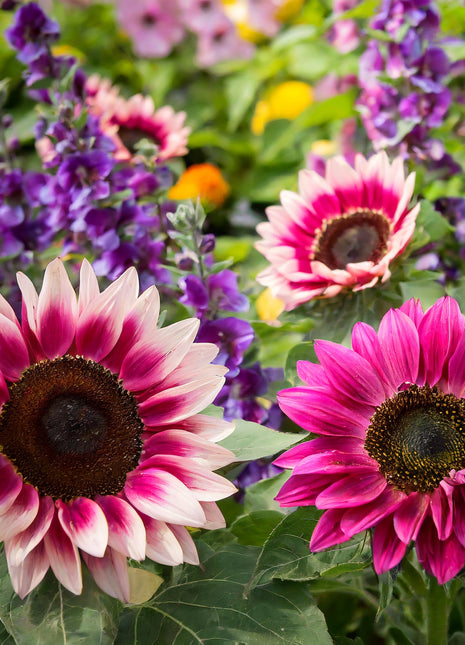
mysite 100 Pcs Strawberry Blonde Hybrid Sunflower Seeds
Product Details Sow Method Direct Sow Sun Full Sun Height 60-72 inches Spread 24-26 inches Ornamental Use Beds. Container. Cut Flowers Life Cycle Annual Growing Information Sunflowers are grown from seed sown directly in the garden after frost. Direct sow seeds in average soil in full sun after all danger of frost. When choosing a site consider that sunflowers need a well-drained soil. They face the sun. so make sure they are in an open area of the garden. The taller varieties will cast shadows on other plants. so plant these at the north end of your garden. Prepare the soil by removing weeds and working organic matter into the top 6-8 inches of soil; then level and smooth. Most plants respond well to soils amended with organic matter. Compost is a wonderful form of organic matter with a good balance of nutrients and an ideal pH level. it can be added to your planting area at any time. If compost is not available. top dress the soil after planting with 1-2 inches of organic mulch. which will begin to breakdown into compost. After the growing season. a soil test will indicate what soil amendments are needed for the following season. Sow seeds ½ inch deep in groups of 2 or 3 seeds. Space the groups 18-24 inches apart. depending on the variety. Firm soil lightly. water and keep evenly moist. Seedlings will emerge in 7-10 days. Thin to one plant per group when seedlings have two sets of leaves. Keep weeds under control during the growing season. Weeds compete with plants for water. space and nutrients. so control them by either cultivating often or use a mulch to prevent their seeds from germinating. Mulches also help retain soil moisture and maintain even soil temperatures. For annuals an organic mulch of shredded leaves lends a natural look to the bed and will improve the soil as it breaks down in time. Always keep mulches off a plant's stems to prevent possible rot. Keep soil evenly moist but not wet. Once established sunflowers can tolerate drought. No fertilizer is needed unless the soil is poor. Do not over fertilize. Monitor for pests and diseases. Check with your local Cooperative Extension Service for pest controls recommended for your area. Some varieties only produce one bloom so once the bloom is spent. the plant may be removed. Remove plants after they are killed by frost in fall to avoid disease issues the following year. Edible sunflowers will mature in about 3 months or more after sowing. To harvest the seeds. cut the heads off after the stalks are quite dry but before fall or winter rains come. Check the flower heads for maturity to see if the florets in the center of the flower disk have shriveled and the back of the flower head is turning yellow. or the head is starting to droop. Cut flower-heads with a foot of the stalk attached. Hang heads in a warm. dry. well-ventilated place so the seeds may fully ripen and dry. Cheesecloth. netting or a paper bag with holes punched in for ventilation should be placed over the head to protect the seeds and to collect those that may drop from drying. Shorter varieties may be grown in containers. Be sure to use a commercial potting mix. Pollenless varieties make terrific cut flowers.
$8.99
-
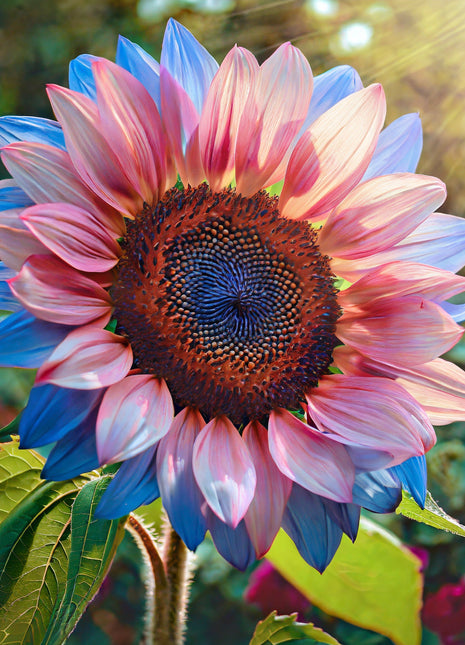
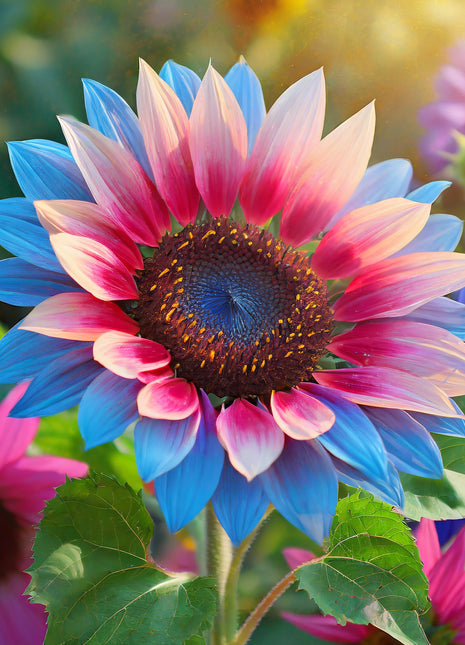
mysite Twin-Blossom Blue Over Pink Sunflower Seeds
Welcome to Our Exclusive Collection! Step into a world of botanical wonder with our extraordinary creation - Twin-Blossom Blue Over Pink Sunflower Seeds. These sunflowers. with their rare double-blossoms featuring blue petals gracefully layered over delicate pink. are here to bring enchantment to your garden. 🌻🌻 Embrace the Beauty of Nature 🌿 The Twin-Blossom Sunflower. a botanical marvel. offers a unique spectacle. With its vibrant blue petals gently overlaying soft pink hues. this sunflower is like no other. Each petal tells a story of nature's artistry. adding a touch of whimsy to your garden. It's the ultimate summer showstopper! 🌻🌻 Easy Planting - Just Like Traditional Sunflowers! 🌱 Growing Twin-Blossom Blue Over Pink Sunflowers is as easy as tending to traditional sunflowers. Follow these simple steps: Select the Right Spot: Choose a sunny area with well-draining soil. These sunflowers thrive in sunlight. Plant the Seeds: Plant the Twin-Blossom Sunflower seeds just as you would with regular sunflowers. Space them adequately to allow room for the unique double blossoms. Water and Watch: Keep the soil consistently moist. but avoid waterlogging. Twin-Blossom Sunflowers are low-maintenance. and their distinct charm will soon adorn your garden. Marvel in the Double Beauty: Watch as your garden comes alive with the double delight of blue petals gracefully layered over delicate pink. These sunflowers are a testament to the wonders of nature. 🌟 Limited Stock - Act Now! ⏳ Due to the rarity and charm of Twin-Blossom Blue Over Pink Sunflower Seeds. our stock is limited. Don't miss the opportunity to add these captivating and whimsical blooms to your garden. Each seed holds the promise of a magical and charming garden. guarded by the enchantment of these unique sunflowers. Act quickly before they're gone! Acquire Twin-Blossom Blue Over Pink Sunflower Seeds and Elevate Your Garden's Beauty! 🛍️🌻🌻
$7.99 - $19.99
-
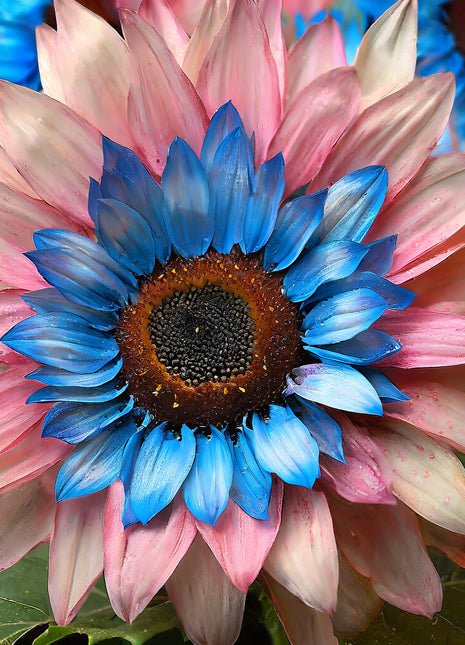
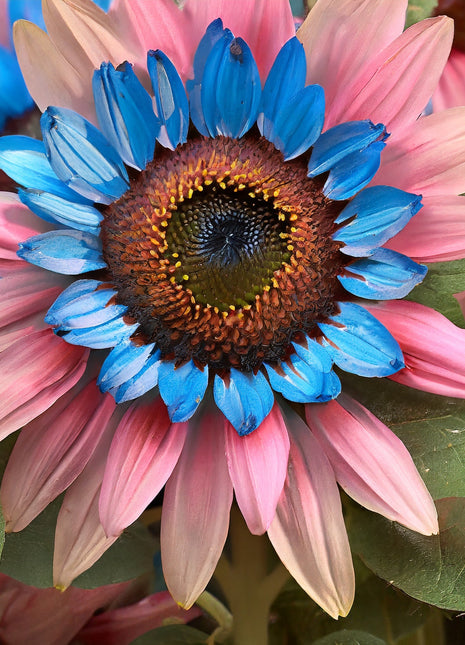
mysite Double-flowered sunflower: blue-pink miracle 🌻🌻
Welcome to Our Exclusive Collection! Step into a world of botanical wonder with our extraordinary creation - Double-flowered sunflower: blue-pink miracle . These sunflowers. with their rare double-blossoms showcasing vivid blue petals nested within delicate pink ones. are here to bring enchantment to your garden. 🌻🌻 Embrace the Beauty of Nature 🌿 The Twin-Blossom Sunflower. a botanical marvel. offers a unique spectacle. With its vibrant blue petals gracefully nestled inside the gentle pink ones. this sunflower is like no other. Each petal tells a story of nature's artistry. adding a touch of whimsy to your garden. It's the ultimate summer showstopper! 🌻🌻 Easy Planting - Just Like Traditional Sunflowers! 🌱 Growing Twin-Blossom Sunflowers is as easy as tending to traditional sunflowers. Follow these simple steps: Select the Right Spot: Choose a sunny area with well-draining soil. These sunflowers thrive in sunlight. Plant the Seeds: Plant the Twin-Blossom Sunflower seeds just as you would with regular sunflowers. Space them adequately to allow room for the unique double blossoms. Water and Watch: Keep the soil consistently moist. but avoid waterlogging. Twin-Blossom Sunflowers are low-maintenance. and their distinct charm will soon adorn your garden. Marvel in the Double Beauty: Watch as your garden comes alive with the mesmerizing combination of blue petals nestled within delicate pink. These sunflowers are a testament to the wonders of nature. 🌟 Limited Stock - Act Now! ⏳ Due to the rarity and charm of Twin-Blossom Sunflower Seeds. our stock is limited. Don't miss the opportunity to add these captivating and whimsical blooms to your garden. Each seed holds the promise of a magical and charming garden. guarded by the enchantment of these unique sunflowers. Act quickly before they're gone! Acquire Twin-Blossom Sunflower Seeds and Elevate Your Garden's Beauty! 🛍️🌻🌻
$6.99 - $16.99
-
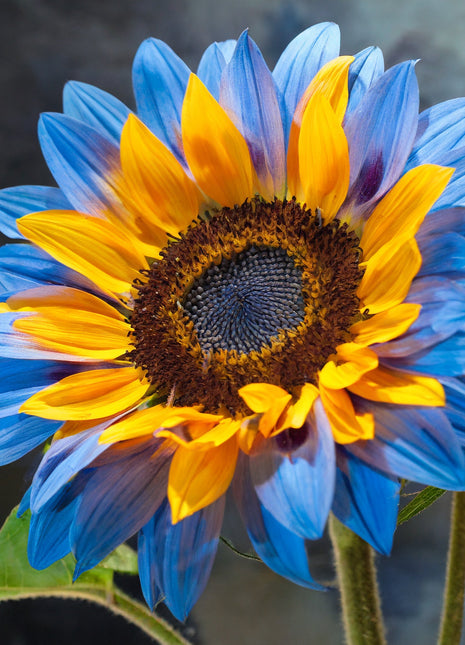
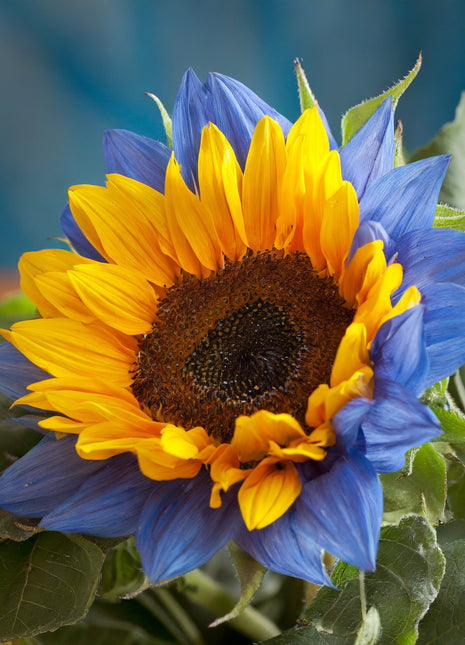
mysite Twin-Blossom Blue Over Yellow Sunflower Seeds
🧑🌾We guarantee that our seeds are both affordable and of high quality.👩🌾 Introducing the Wonder: Twin-Blossom Blue Over Yellow Sunflower Seeds 🌻💙 Welcome to Our Exclusive Collection! Get ready to embark on a horticultural adventure with our remarkable creation - Twin-Blossom Blue Over Yellow Sunflower Seeds! These extraordinary sunflowers are here to turn your garden into a masterpiece. 🌻💙 Experience the Magic of Blue and Yellow 🌈 These sunflowers are a testament to the artistry of nature! The melding of blue and yellow petals within twin blossoms produces an enchanting visual symphony that will leave you utterly captivated. It's like sunshine and sky meeting in a bloom. twice as enchanting! 🌻🌈 Planting is a Breeze 🌱 Don't worry. these beauties are a snap to plant! Follow these easy steps and watch the magic unfold: Select Premium Soil: Twin-Blossom Sunflowers thrive in well-draining. loamy soil. If your soil is fluffy and nutrient-rich. you're already off to a great start. Embrace the Sun: Find a sunny nook in your garden or on your balcony. These sunflowers absolutely adore basking in the sun. Hydrate Gently: Keep the soil consistently moist but avoid overwatering. These sunflowers appreciate care. not waterlogging. Watch the Wonders Unfold: These unique sunflowers grow with minimal fuss. With each passing day. you'll be rewarded with a magnificent display of colors from the twin blossoms. Gardening has never been this magical! 🪄 Limited Stock - Act Quickly! ⏳ Due to their rare status. our Twin-Blossom Blue Over Yellow Sunflower Seeds are in short supply. Don't miss the opportunity to own these captivating blooms that will transform your garden into a work of art. 🌻💙 Each seed holds the promise of breathtaking twin blossoms. waiting for your loving touch to bring them to life. Act now. before they vanish! Acquire Twin-Blossom Blue Over Yellow Sunflower Seeds and Cultivate Your Garden's Unique Elegance! 🛍️🌻💙 🎁Exclusive Online Offer - Plant More. Pay Less!🌿 Seize the opportunity with our exclusive online promotion – Add any four seed packets to your cart. and only pay for three! That's right. when you indulge in the joy of gardening with three seed packets. we'll graciously gift you the fourth one. Your garden is about to embark on a spectacular transformation. and we're here to make it extra special for you. Embrace the beauty of nature with our Buy 3. Get 1 Free offer – because your garden deserves to flourish without breaking the bank! 🌿🌺🎁 🔥Click “ADD TO CART” to get yours now!🔥 Processing It usually takes 3-5 business days to prepare an order. If processing time take longer than that. an email will be sent to customer's registered email box.♻️14 Days Easy Return & ExchangeItems can be returned or exchanged within 14 days from the delivered day. AFTER-SALE SERVICE Shipping - Worldwide Express Shipping is available Returns>> Fast refund.100% Money Back Guarantee. If for whatever reason you're not completely satisfied. then return the product within 90 days. AT Our Store. WE HAVE STRONGLY CONFIDENCE ON OUR PRODUCTS. EVERY PRODUCT INCLUDES A 24-MONTH. WORRY-FREE GUARANTEE. IF YOU HAVE ANY PROBLEM OR SUGGESTION. PLEASE CONTACT US FREELY. WE WILL PROVIDE FRIENDLY SUPPORT FOR YOU IN 24 HR.
$7.99 - $19.99
You have seen 48 out of 79 products






































